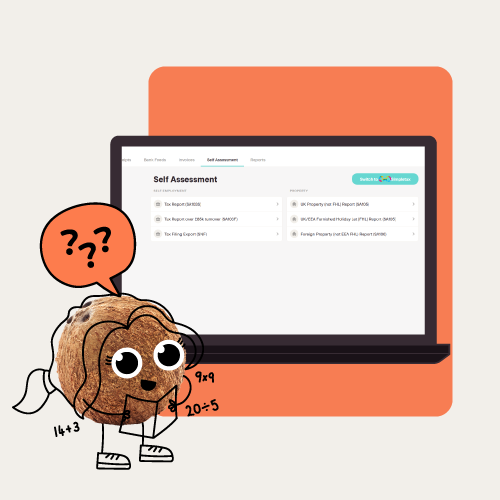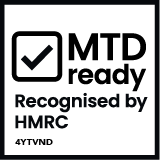Before you start filling out your Self Assessment, you’ll need to have the following information ready:
- Your ten-digit Unique Taxpayer Reference (UTR) – you will need this to log in to the HMRC portal
- Your National Insurance number
- Details of your untaxed income for the tax year, and records of any expenses related to self-employment (all of which should now be included in your tax return summary)
- Your P60 or any other records detailing how much income you’ve already paid tax on
Some sections of the tax return may not be relevant to you personally, but it’s good practice to read each section carefully so that you don’t miss anything important.
Here’s a summary of the different sections of the online Self Assessment, so you know what to expect.
Tell us about you
Here, HMRC will ask you to provide information about you, including your name, contact details and address. If you have a student or postgraduate loan, you’ll also want to indicate that here so that this is taken into account.
Note that some of this information is optional, but it’s always good practice to enter all the information you can.
Tailor your return
HMRC uses this section to tailor the main portion of the Self Assessment return to you, by asking a series of yes or no questions. As these sections are personal to you, be sure to read all the questions carefully before answering.
Here are a few things you can expect to indicate on this portion of the form:
- If you were in employment
- How many self-employed businesses you have (and associated business names)
- If your turnover was in excess of £1,000 (if you use Coconut, you can see this on your tax summary)
- If you received rental income
- If you received foreign income
- If you need to declare capital gains
- If you received dividends
- If you received income from pensions
- If you donated to charity
- If you received child benefit
- If you received any interest
- If you incorrectly claimed any Coronavirus support
- If you made income tax losses
- Other UK income
Fill in your return
This is the main portion of the Self Assessment, where you’ll need to provide information about your business income and expenses.
Details
The first sections are for filling out information about you and your business. If your business started after the tax year or ceased trading before the end of the tax year, then you’ll need to provide HMRC with a date. You may also want to mark ‘cash basis’, as this will apply to most small businesses and sole traders who calculate their income and expenses based on money they actually received or paid out.
Income and expenses
- This is where you enter your turnover from your tax return summary on Coconut. You can also record any other business income aside from your main business in the ‘Any other business income’ box of this section; please note that this includes coronavirus support payments (if you received any). If you’ve been marking other sources of income as other income in Coconut, this will also appear on your Coconut tax return summary.
- You also record your expenses in this section of the return. You can do so as a single value or as a detailed breakdown. If you use Coconut's tax return summary, we provide both a total expenses value and a breakdown based on your categorised expenses, both of which you can enter here.
Capital Allowances and balancing
Capital allowances are used to reflect the ageing of assets for tax purposes. Capital allowances are calculated based on the total value of assets capitalised.
Other adjustments
If you’ve received Self-Employment Income Support Scheme grants, or brought forward losses from earlier years, you can declare that information here.
Losses
You’ll need to determine if you were in profit or loss depending on your total income and total expenses. Simply deduct your total expenses from your total income; if the value is positive then you’ve made profit, if it’s negative, then you’ve made a loss. You can record the loss (if this applies to you) here.
National insurance contributions
- Here you should indicate if you are exempt from Class 4 National insurance contributions. If none of these exemptions apply, make sure you answer ‘None of these apply'.
- If you earned over £6,475, your return will also indicate that you need to pay Class 2 National Insurance Contributions. If your profits are less than this amount, then you can pay this voluntarily.
Check your return
Once you’ve completed all the sections above, you’ll have a summary view of all the information you entered so far.
From here, you can revisit sub-sections on your return to make any amendments as needed.
View your calculation
Once you’ve completed your Self Assessment online, you’ll have an option to view your calculation before you submit. It is always a good idea to check these figures to make sure they look right before you do so.
You may also be subject to payments on account, that go towards your next tax bill.
Save & submit
You can save your Self Assessment and return to it at any time. If you’ve spent a long time filling this information out, it can be good to give yourself a break and revisit it for a final sense check before you submit.
Then once you’re happy with it, hit that submit button.
You did it! Well done!












